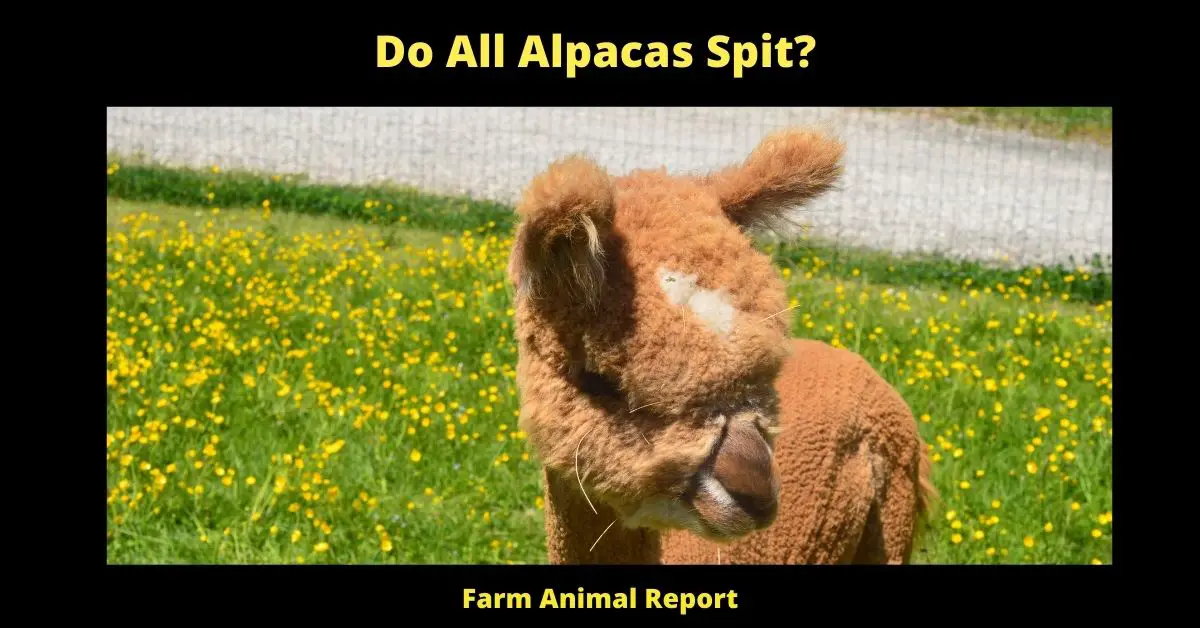Not all alpacas spit, but they are capable of doing so. “Spit” is somewhat euphemistic; occasionally the projectile contains only air and a little saliva (although often this will be accompanied by acidic stomach contents). All camelids do spit
Do All Alpacas Spit?
Some Alpacas have a gentler nature and do not, or rarely ever spit. Others are more prone to do so, especially if they feel threatened or angry. If you are worried about being spat on, always ask the owner of any alpacas you may be meeting which ones are more likely to spit.
Jump to 18 ways Alpaca Farmers make Money
Spit is mainly used as a defensive weapon against predators and other animals that the camelid considers a threat. It is also used as a way to show dominance or anger.
Alpacas use two methods of spitting: the direct spit and the wind blast. The direct spit is more accurate and can travel up to six meters (10 feet). The windblast is less accurate but has a greater range, traveling up to 12 meters (20 feet).
The frequency of spitting varies widely among individual alpacas, depending on the animal’s personality and how it is being managed. Do All Alpacas Spit?
If you are considering purchasing an Alpaca for your farm, then it is important to know that not all Alpacas spit. However, if you are thinking about buying a llama instead of an alpaca, then you should know that they both spit! But why would anyone want to buy a spitting animal? The answer has to do with the history of these animals and their homeland.
Training an Alpaca not to spit.
One of the most important things about working with alpacas and lambs is teaching them to be respectful. When we see that they’re getting ready for a spit, our favorite activity as employers (besides loving on those animals), involves giving out some water from a squirt bottle if necessary! If you give your petting herbivores this kind of warning signal before diving into their mouths or nostrils then chances are good he’ll stop what he’s doing right away; at least long enough so I can pat him down gently over his brow where sweat usually builds up after minutes of intense petting.
When we use the squirt bottle, we make sure it can reach and be filled easily (like a spray nozzle on top of a water bottle). It may seem like you’re not “getting to know each other well enough yet” but when your alpaca or lamb is doing something that could potentially cause harm (like spitting), it’s important to act quickly.
Any type of positive reinforcement like treats or kind words also works well when training animals. We’ve found that they usually respond better to this type of communication than shouting or using fear tactics (though those have their time and place too).
If you do ever get spit on, the best thing to do is try not to panic! It’s nothing personal, it’s just their way of communicating. And as long as you’re respectful and understanding, they’ll usually calm down pretty quickly.
Alpaca Training Tactics:
- Water Bottle
- Treats
- Spending time with them to get to know each other
- Start Training Early
- Be Respectful and Understanding
Final Thoughts – Do All Alpacas Spit?
In summary, not all alpacas spit, but they are capable of doing so. Spit is mainly used as a defensive weapon against predators and other animals that the camelid considers a threat. It is also used as a way to show dominance or anger. Alpacas use two methods of spitting: the direct spit and the wind blast. The direct spit is more accurate and can travel up to six meters (ten feet). The windblast is less accurate but has a greater range, traveling up to 12 meters (twenty feet). The frequency of spitting varies widely among individual alpacas, depending on the animal’s personality and how it is being managed. If you are considering purchasing an Alpaca for your farm, then it is important to know that not all Alpacas spit. However, if you are thinking about buying a llama instead of an alpaca, then you should know that they both spit! But why would anyone want to buy a spitting animal? The answer has to do with the history of these animals and their homeland. Training


